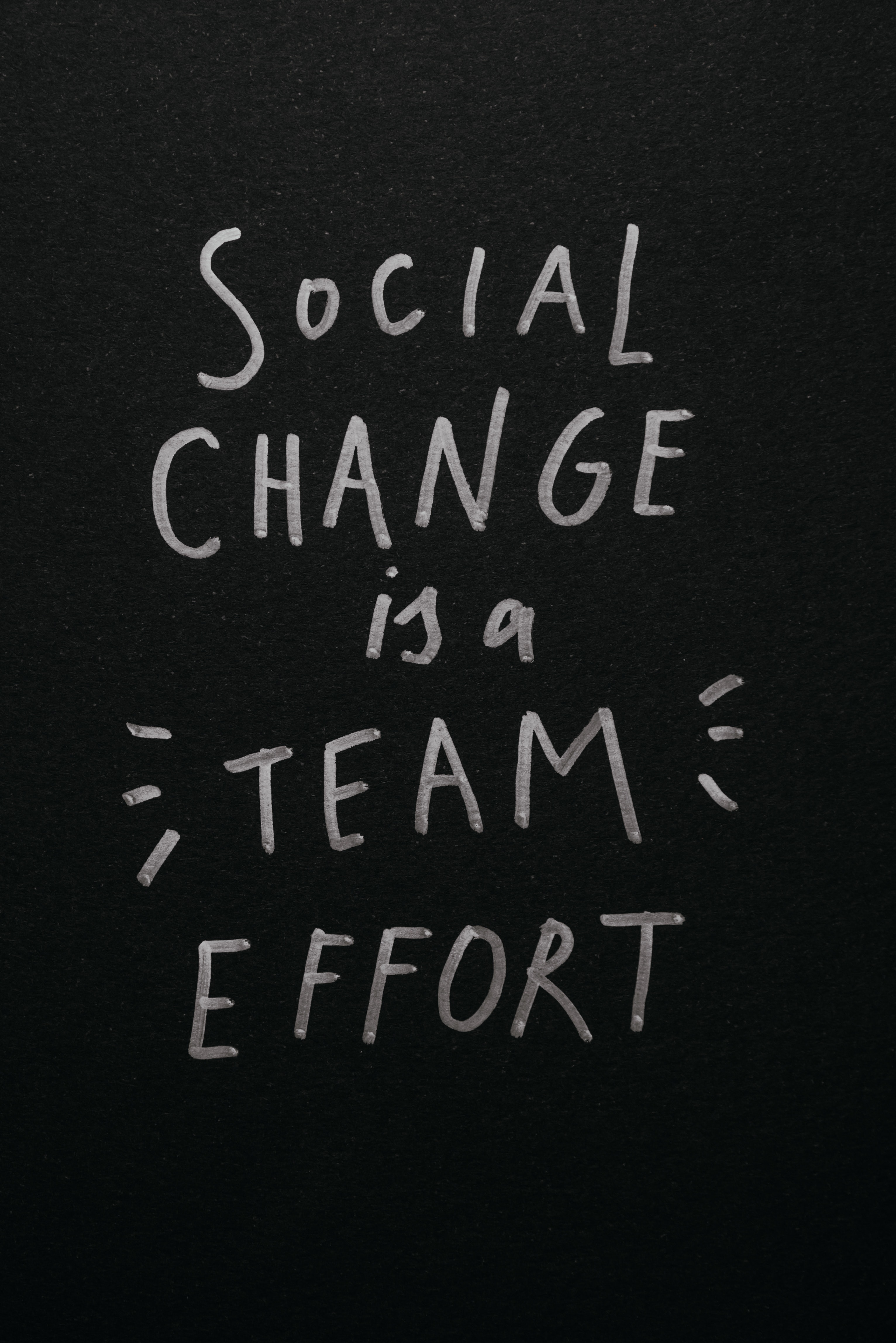As The 2B Collective, our aim is to reach a total of 2 billion people. 25% of the world's population. This number is not chosen randomly, we based it on the findings of sociologist Damon Centola. His research changed the overall opinion about the social tipping point. Because in the past decades, it was believed that at least 51% of a group had to change their opinions in order to cause universal change. Damon Centola proved this to be wrong: his research indicated that if 25% of a group pushed the change, the rest of the herd will eventually follow.
What is a social tipping point?
A social tipping point is a sociological term and is defined as: “a point in a social system where a small quantitative change can trigger rapid and non-linear changes. This inevitably and often irreversibly leads to a qualitatively different state of the social system” (Pote, 2022).
In the beginning, it was believed that 51% of a group was needed in order to cause behavioral change. Later, in 1977, this belief was adopted. When leadership roles in companies were strongly dominated by men, discrimination and oppressive culture against women (which were small minorities, < 19%) was normal. However, this changed as the proportion of women rose to 20%–35%, and the workplace environment altered to be more welcoming to women. This was the first indication that also smaller fractions of a group can push toward new attitudes and behaviors.
It is important to note that social and climate tipping points are different. Since climate tipping points are irreversible once they are reached. And social tipping points can always change and evolve.
The research of Damon Centola:
Although social tipping points have already been researched before, Damon Centola’s publication in 2018 altered the overall beliefs about tipping points again.
In short, part of the study consisted of an experiment. A total of 10 groups participated in the experiment, activists were placed in each group with the intention of convincing the other members to adopt a new norm. The number of activists per group varied between 17% and 31%. Even when just 1 activist would be added to a group, resulting in 25% of activists, it would result in a social tipping point: the whole group would alter its general behavior and would adapt to the new set norm.
With these conclusions, a new light has been shed on the philosophy of the social tipping point. Making it an even more interesting topic when wanting to spark behavioral change on a large scale. However, Damon expresses that this percentage (25%), is somewhat flexible. Meaning that every situation in real life is different and every circumstance has its own storyline.
Examples of tipping points in society related to sustainable development:
One of the most recent examples of a social tipping point is the solar revolution in numerous European countries. In Germany, the government desired to increase the number of households with solar panels. Which proved to be difficult since people felt reluctant to change. However, once a federal program was launched that activated only a few households in neighborhoods to install panels, it also triggered the other households to make the switch. These reluctant households saw their neighbors install solar panels, and therefore also wanted to do so. In 2012 1.3 million households in Germany had solar panels, 10 years later in 2022, this has doubled to 2.6 million solar panel installations.
Now the Netherlands is the leading country in this energy transition. Over 1.5 million houses have installed solar panels, which means that one in five households have them on their roof. This shows that the social tipping point related to solar panels happened in multiple countries within the EU.
Our personal tipping point philosophy
One of our core values is #powerofthecrowd. Because we strongly believe that when we reach our goal of activating 2 billion people, which is 25% of the world population, the transition to a climate-neutral, circular, and inclusive society will succeed. Let’s #changetheworldplaying.
Sources:
Loeffelholz, T. M., & Loeffelholz, T. M. (2020, 3 november). The 25% Tipping Point. YES! Magazine. https://www.yesmagazine.org/issue/what-the-rest-of-the-world-knows/2020/11/03/how-social-change-happens
NOS. (2022, 3 augustus). Nederland Europees koploper zonnepanelen, maar hoe kan het beter? https://nos.nl/artikel/2439211-nederland-europees-koploper-zonnepanelen-maar-hoe-kan-het-beter
Over de grens | Duitsland ziet verkoop zonnepanelen exploderen tot 7.181 megawattpiek. (2023, 4 februari). https://solarmagazine.nl/nieuws-zonne-energie/i28926/over-de-grens-duitsland-ziet-verkoop-zonnepanelen-exploderen-tot-7-181-megawattpiek#:~:text=In%20totaal%20telt%20Duitsland%20momenteel,naar%20een%20significant%20lager%20niveau.
Pote, B. (2022, 19 juni). Social tipping point and optimism. Bon Pote. https://bonpote.com/en/social-tipping-point-and-optimism/
Research Finds Tipping Point for Large-Scale Social Change. (2018, 7 juni). Annenberg. https://www.asc.upenn.edu/news-events/news/research-finds-tipping-point-large-scale-social-change




